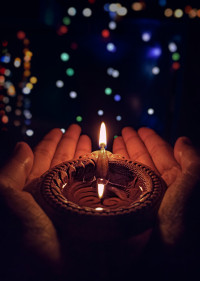As it is
Remembering Jhalakman Gandharva
Many from the younger population may be unaware of Gandharva’s contribution to Nepali music, but people from my generation remember him for the genius he was.
Balaram Chaulagain
It must have been in 1980 when the legendary Jhalakman Gandharva asked me to compose a song for him. He wanted something that catered to modern tunes but was infused with traces of folk music. And to say that I was taken by surprise with this request would be an understatement.
The popular folk singer, whose song ‘Amale Sodhlin Khoee Chhora Bhanlin’ was on the lips of Nepalis from across the country, wanted to sing something that I wrote. Back then, I used to contribute articles on a contract basis for the state-owned Radio Nepal, so you could say I was used to writing—but I only wrote prose.
However, giving up on an opportunity to write for one of the most popular singers in the country was not something I wanted to do. So, with great difficulty, I wrote the song ‘Timro Nai Maya Lagdachha Sahilee Samjhanchhu Chin Chhin’, which Gandharva liked—because a few weeks after I gave the song to Gandharva, he recorded the song with music composed by musician Ganesh Pariyar.
Radio Nepal, the only broadcasting station of the country, used to play the song frequently, and it soon became a popular number. Sometimes, even long after I had left, whenever I tuned into the radio station, I used to hear the song playing on the radio over the years.
But as new artists, new genres and new media outlets—like television—replaced the 90s scene, it wasn’t difficult for people to forget the 80s classic songs. However, recently, with the rise of social media, particularly YouTube, some old classics are being imbued with new life and vitality, including the evergreen voice of Jhalakman Gandharva.
Many from the younger population may be unaware of Gandharva’s contribution to Nepali music, but people from my generation remember him for the genius he was. A maestro in both violin and sarangi, he could seamlessly transition between the two musical instruments as per the need of melodies in his songs. His 100 or more songs were all popular hits during the 80s.
And to hear his music again—revitalised—is something I had never thought possible. Many young aspiring and professional musicians have taken to social media platforms like Facebook and YouTube to sing covers of Gandharva’s once popular songs. Many have even uploaded the original version, and the videos have been accumulating a good number of views.
One of the most recent and popular covers on YouTube is by Indian composer-singer and lyricist Arko Provo Mukharjee. His version of the song I wrote for Gandharva—which is a collaboration with other artists Hari Maharjan, Naomi and Dolinman—is a great tribute to the legendary singer.
As covers usually do, Mukharjee’s rendition has taken the liberty to modify the original melody. It seems that while bringing back old music, he is also catering to the contemporary tastes of his audiences. His intent has definitely worked in his favour—as many people are being drawn to his YouTube channel and are listening to his rendition of a forgotten melody. The popularity of Mukharjee’s renditions has grown so much that Nepalis on YouTube have even named his covers as a “musical journey” to classic Nepali songs.
It is also remarkable to note how Mukharjee, an Indian musician, helped in bringing back folk tunes to a newer audience. It is also a beautiful display of how music has the capacity to transcend political and geographic boundaries. In order to understand the magic behind the team’s efforts—with flute and mandolin in the background with Mukharjee’s accurate Nepali diction—one has to hear it for themselves.
Following Mukharjee’s YouTube success with covering Gandharva’s songs, other aspiring cover singers like Sradha Prasai and Ankita Pun have also jumped on the bandwagon and uploaded their own renditions.
Some have even incorporated rap in these classic songs. This, however, has received mixed reviews, with some YouTubers saying that the cover artist has disrespected the original folk music, and others defending the performances. To that, I say to each their own!
But despite all this, one thing has been established—the charm and love for the evergreen songs sung by the legend Jhalakman Gandharva have remained close to the heart of all Nepalis. It also puts light on the fact that while it is important that we preserve classic melodies, evolution is inescapable. For these classics to live in the hearts of Nepalis—like those of Gandharva, whose songs are being sung even after 16 years of his death—music too needs to go through its own metamorphosis.
And perhaps that is why Gandharva still lives in our memories—through his evergreen songs that still strikes a chord with the people.
***
What do you think?
Dear reader, we’d like to hear from you. We regularly publish letters to the editor on contemporary issues or direct responses to something the Post has recently published. Please send your letters to [email protected] with "Letter to the Editor" in the subject line. Please include your name, location, and a contact address so one of our editors can reach out to you.




 10.12°C Kathmandu
10.12°C Kathmandu










